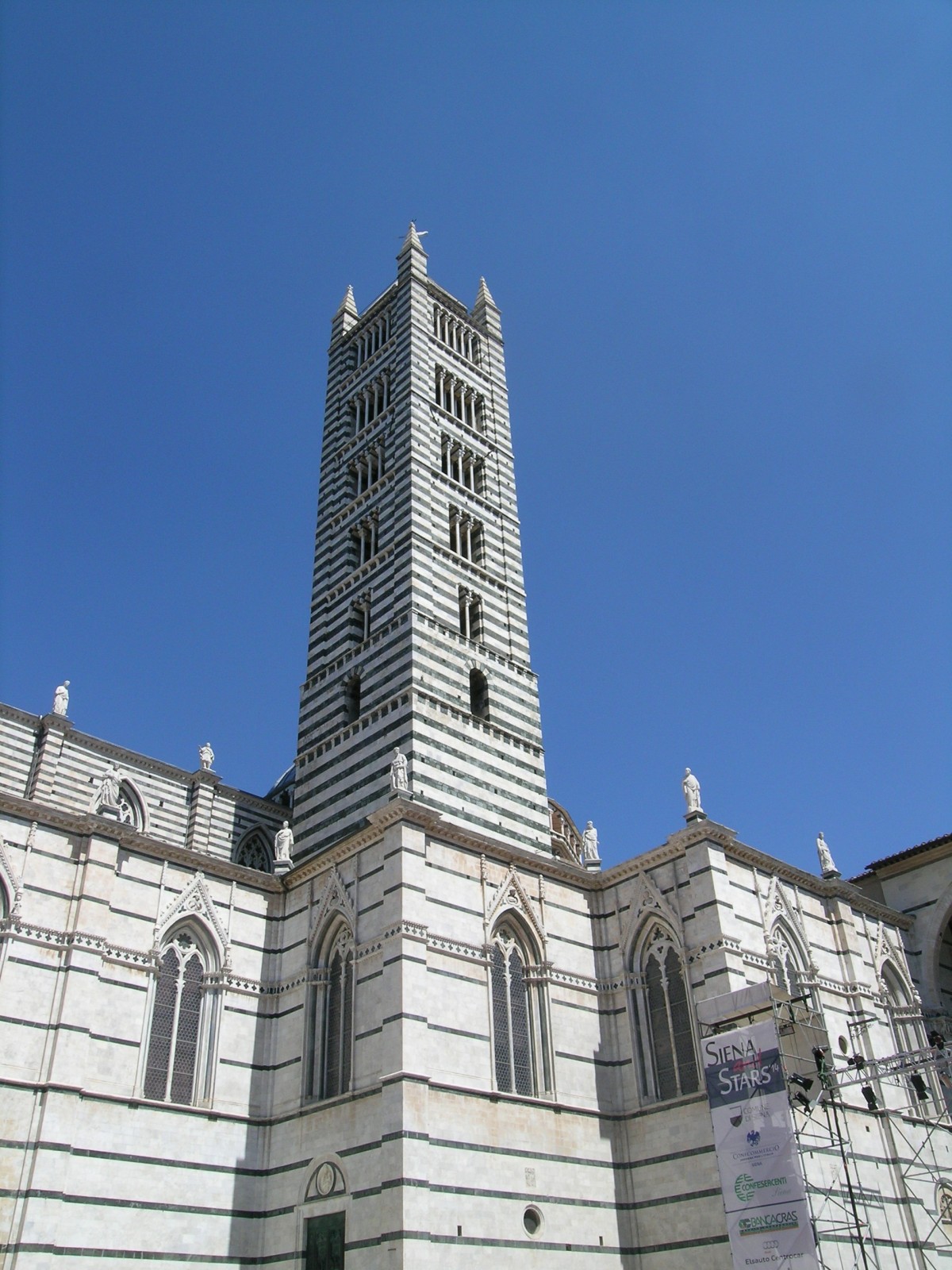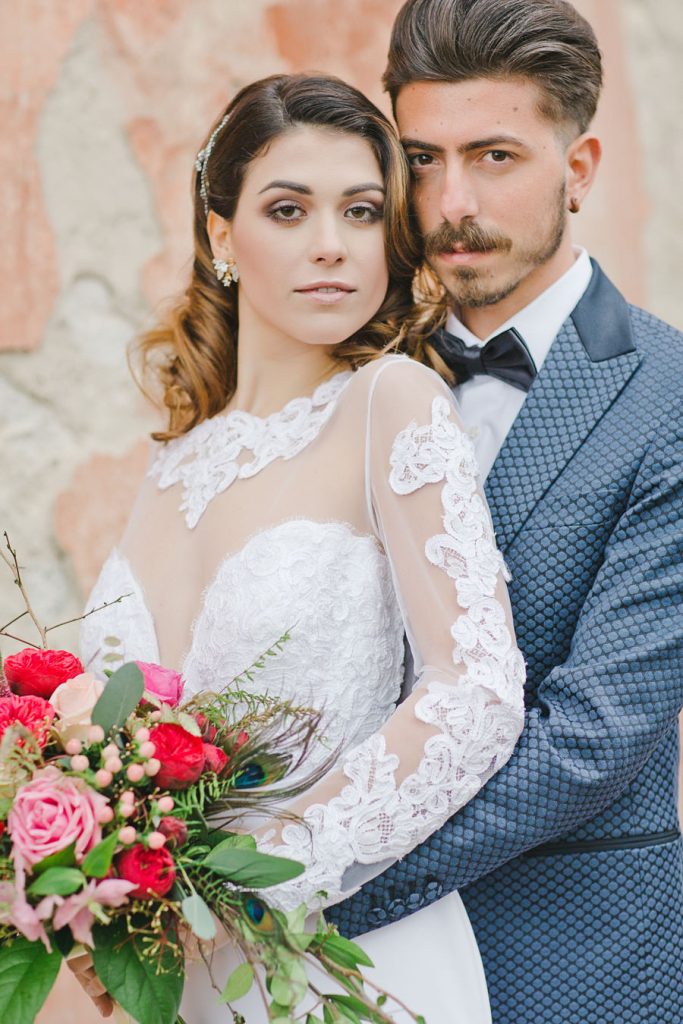Siena Weddings
The Piazza del Campo, a red brick lined square crowded with people, is the theater for this breathtaking race. And majestically soaring over the square is the famous Torre del Mangia, adjacent to the city hall, which accommodates the civic museum and the wedding hall. The city hall is an ancient palace dating back to the 14th century.
The wedding hall windows open up to Piazza del Campo. Its furnishings and décor make you literally leap back in time, to the Middle Ages and into this impressive hall of glamorous austerity.
The civil wedding will be solemnized by the Mayor or a member of the city council; its validity is recognized worldwide (for detailed information on civil weddings please see the Civil Weddings section).
As for the photo tour, the Piazza del Campo is in and of itself one of the most outstanding spots in all of Italy, comparable to San Marco Square in Venice or the Vatican Square. Indeed, it ranks as one of the greatest medieval squares in Europe.
Its elegant shape and downward slope toward the Torre del Mangia, and the architectural integrity of its red brick pavement all make it unique.


Many tiny medieval roads depart from the square, leading to hidden corners of the city. On your way, the incredible doors and windows that open up onto the roads, and that sometimes hide a secret garden or a wishing well, will delight you. In fact, Siena is a pedestrian haven closed to almost all automobile traffic; making it one of the most beautiful medieval cities in Tuscany. This makes for countless photo opportunities after your ceremony. And after all of the photos, you will be ready for a relaxing and fulfilling reception; complete with food and libation.
The mysterious Middle Ages imbue Siena and lead us to wonder how weddings were in the 13th century and how we might bring a bit of that romance to our own wedding…
Ceremonies were very similar to those held today, one civil and one religious, with words and symbols (like the ring) almost identical to those of almost seven hundred years ago. There is some variance as to what color the bride wore, typically blue or red and later on white.
In Siena, like most of Italy and Europe at the time, wedding parties took all day, no matter what social class the betrothed were from, or the type of marriage.
Wedding parties were elaborate and the menu for the feast might include roasted quail, partridge and turtledove, goose, deer, chicken hare, roast wild boar, peacock, capon, duck, turkey veal, goat, mutton, salmon, cheese, grilled pumpkin, walnuts, fresh fruit, oysters steamed in almond milk, breads and pasta, cabbage stew, pies and custard and spiced wine. With international trade at its height, ingredients from all over the world made their way to Italy.
Meat was always served with rich sauces and accompanied by many types of aromatic breads. Apples were available as a cultivated fruit, but other types of wild fruit could be gathered to fill banquet tables with strawberries, raspberries and currants collected from the woods. Foods were heavily spiced and it was common to find cloves, cinnamon, saffron, pepper, ginger, anise and nutmeg.
The dish might also be sprinkled with basil, parsley, sage, betony and rosemary. Most salads were made with onions, shallots, boiled carrots, radishes, lettuce and turnips. Herbs, nuts, olives, vinegar, oil, and perhaps even sugar, might be added.
Guests ate with their hands although sometimes they were furnished with a knife and fork. Since there was no means of conserving leftover food, guests ate for hours until the dishes were finished. This was unique for most Medieval people because they normally ate only one substantial meal a day followed by a light snack of perhaps bread and olives and wine in the evening.
Medieval wedding festivals usually ended with dances that were accompanied by musical instruments and song that lasted for hours; the ladies and gentlemen singing and dancing in a circle.
Today, our menus reflect different and increasingly international tastes, even though the nuptial banquet is still as lush as ever and the song and dance that follows just as lively.
Nestled in the Tuscan hills, Siena is rich with colorful and aromatic vegetation. Any wedding would be made richer with the addition of local seasonal flowers and small branches of evergreen trees and shrubs. There are a variety of mountain area species and of distinctly Mediterranean species that create a unique and varied landscape. The area immediately behind the coast is characterized by hills that reach an altitude of 300-400 meters above sea level where we find many Mediterranean species of plants. The typical plant formation is of evergreen chaparral with shrubs like myrtle, rosemary, lavender, heather, mastic, strawberry tree and others, and with trees like Holm oak and domestic and maritime pine.
Extol the beauty of Tuscany by adding any one of its native plants to your wedding arrangements: primrose, blackthorn, cherry, gentian, beech, English oak, laurel, olive, chestnut, strawberry tree, Holm oak, maritime pine, Scotch broom, iris and cypress.

Imagine a venue with banquet tables covered in white linens, a soft candle lit atmosphere rich with the scents of Tuscany, soft bubbles rising from glasses of spumante and the lush perfume of foods prepared from everything locally sourced.
Whether your wedding is for 50 guests or 500, each detail is equally as important. Let us help you craft the perfect event.
We will exceed your expectations, while becoming members of your family for a most important day of celebration.
Chiara Sernesi

WE CAN’T WAIT TO HEAR FROM YOU!
For more detailed information on rates and to schedule a complimentary consultation, please contact us.
Please take the time to answer the questions in the request form so we can better understand your needs. We will be in touch via email or phone within 24 hours.
Information sent on this form is collected by Weddings In Tuscany only, in order to provide its services and not for spamming purposes, according to provisions of multiple legislations, including Art. 13/14 of Regulation (EU) 2016/679 (General Data Protection Regulation).
If no data are sent using this form, Weddings in Tuscany will not be able to provide its services.

